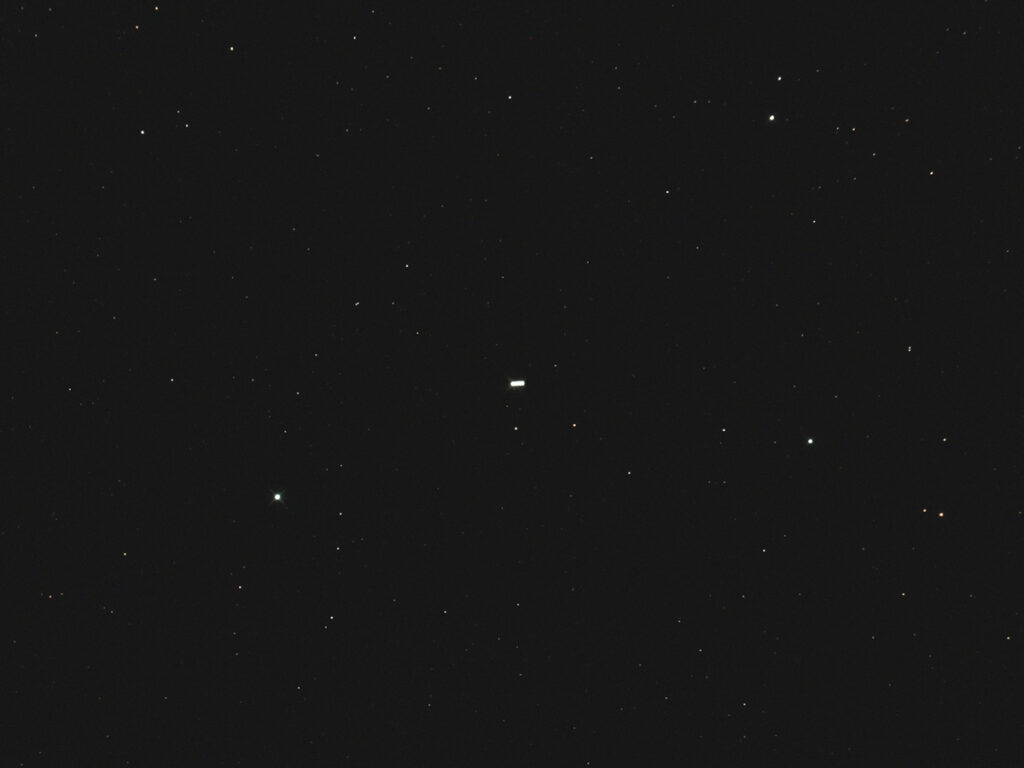
Telescope: Astro-Tech 8” f/8 Ritchey-Chretien, Orion Atlas EQ-G
Camera: Canon EOS Ra, Baader Mk III MPCC
Filter: Orion Imaging Skyglow Filter
Guide scope: Astro-Tech 60mm, Starlight Xpress Super Star, PHD2
Exposure: 30x60sec, ISO 800, saved as RAW
Darks: Internal (Long Exposure Noise Reduction On)
Flats: 32×1/2sec, Tee shirt flats taken at dusk
Average Light Pollution: Red zone, Bortle 8, fair transparency, bright moonlight
Lensed Sky Quality Meter: 18.0
Stacking: Mean with a 1-sigma clip.
White Balance: Nebulosity Automatic
Software: Backyard EOS, Deep Sky Stacker, Nebulosity, Photoshop
The short streak in the center of this field shows the apparent motion of (1) Ceres over the period of about 30 minutes on the evening of November 22, 2021, at 10:00pm local time. Ceres was the first asteroid discovered as part of a methodical search for a ‘missing’ planet between the orbits of Mars and Jupiter that began in 1800. Giuseppe Piazzi, from Palermo, Sicily, discovered Ceres on January 1, 1801, and it just happens to be the largest and most massive asteroid in the solar system. Ceres is 590 mile in diameter and was 164 million miles away shining at magnitude 7.1 in Taurus crossing the Hyades star cluster when this image was taken.
Ceres is still in Taurus, but has since moved off to the west and now lies south of the Pleiades star cluster. Although it is currently 203 million miles away it is still relatively bright at magnitude 8.2 and is an easy target for binoculars or small telescope.
Recent Comments